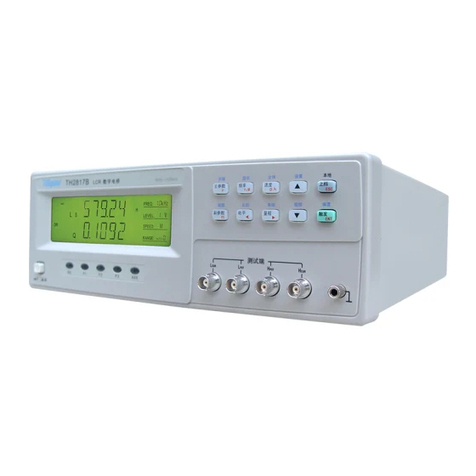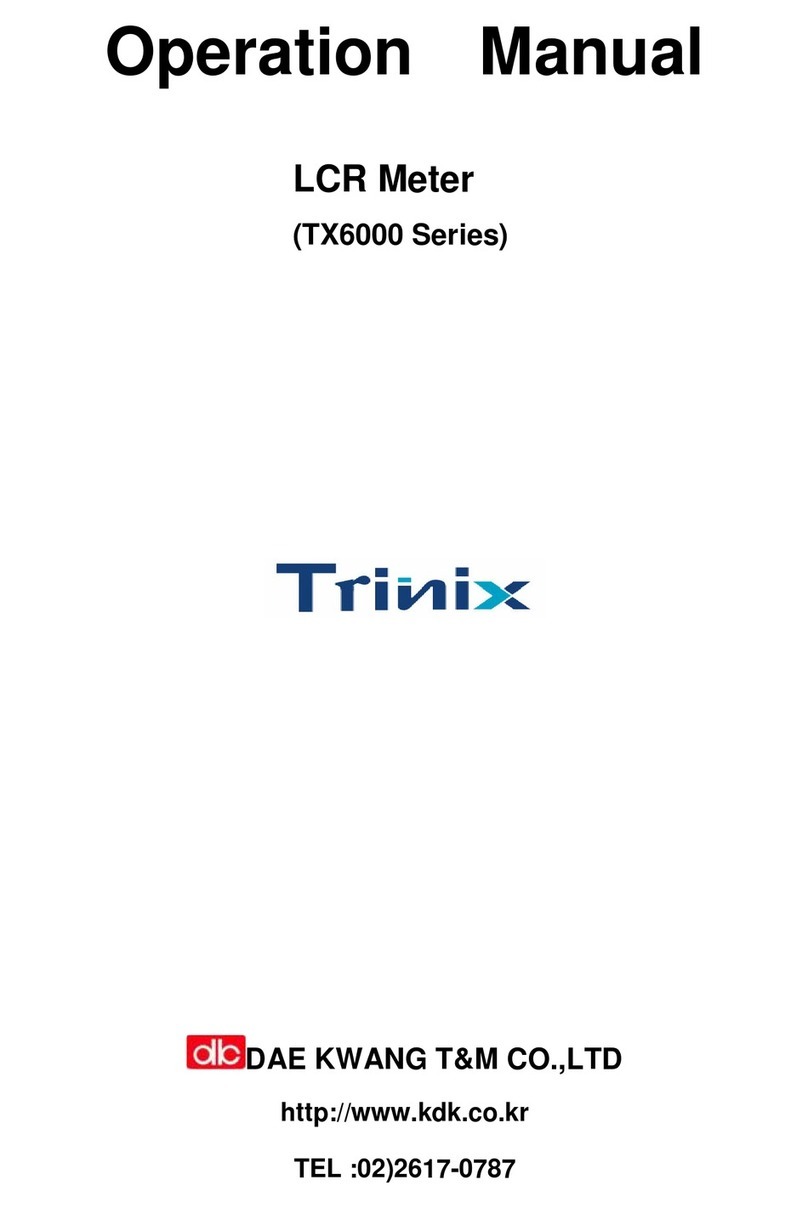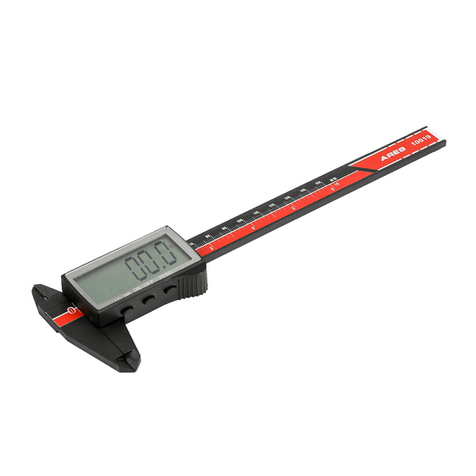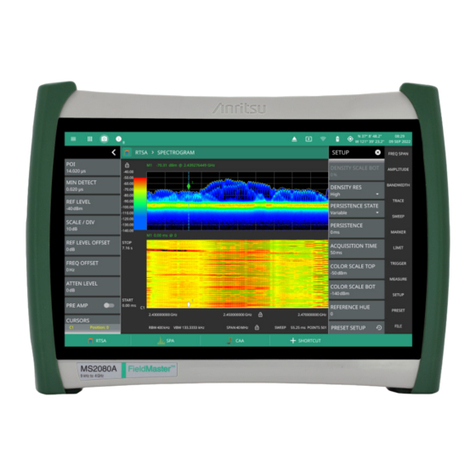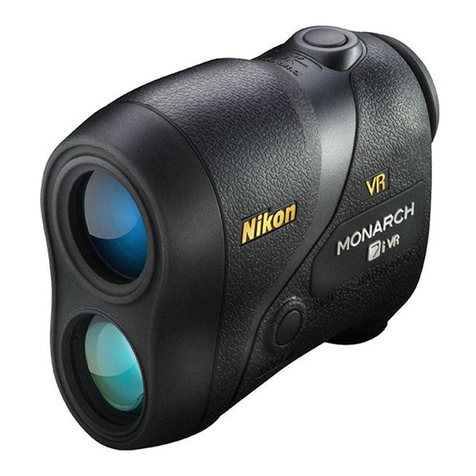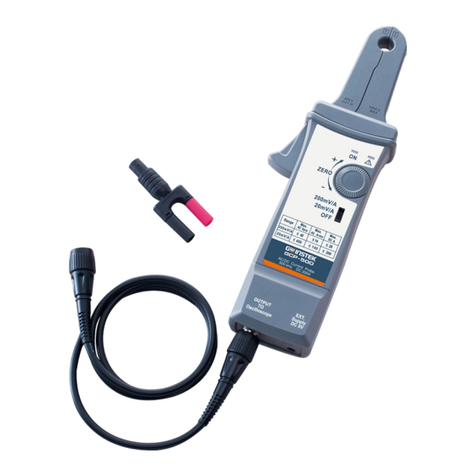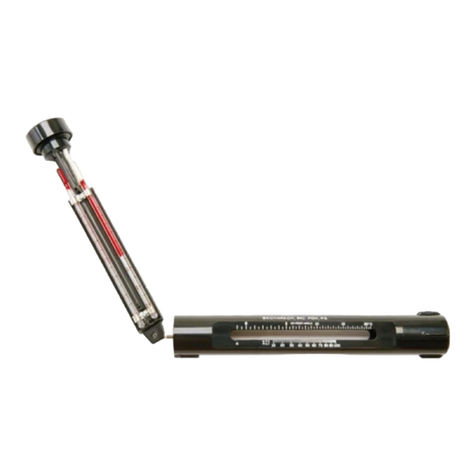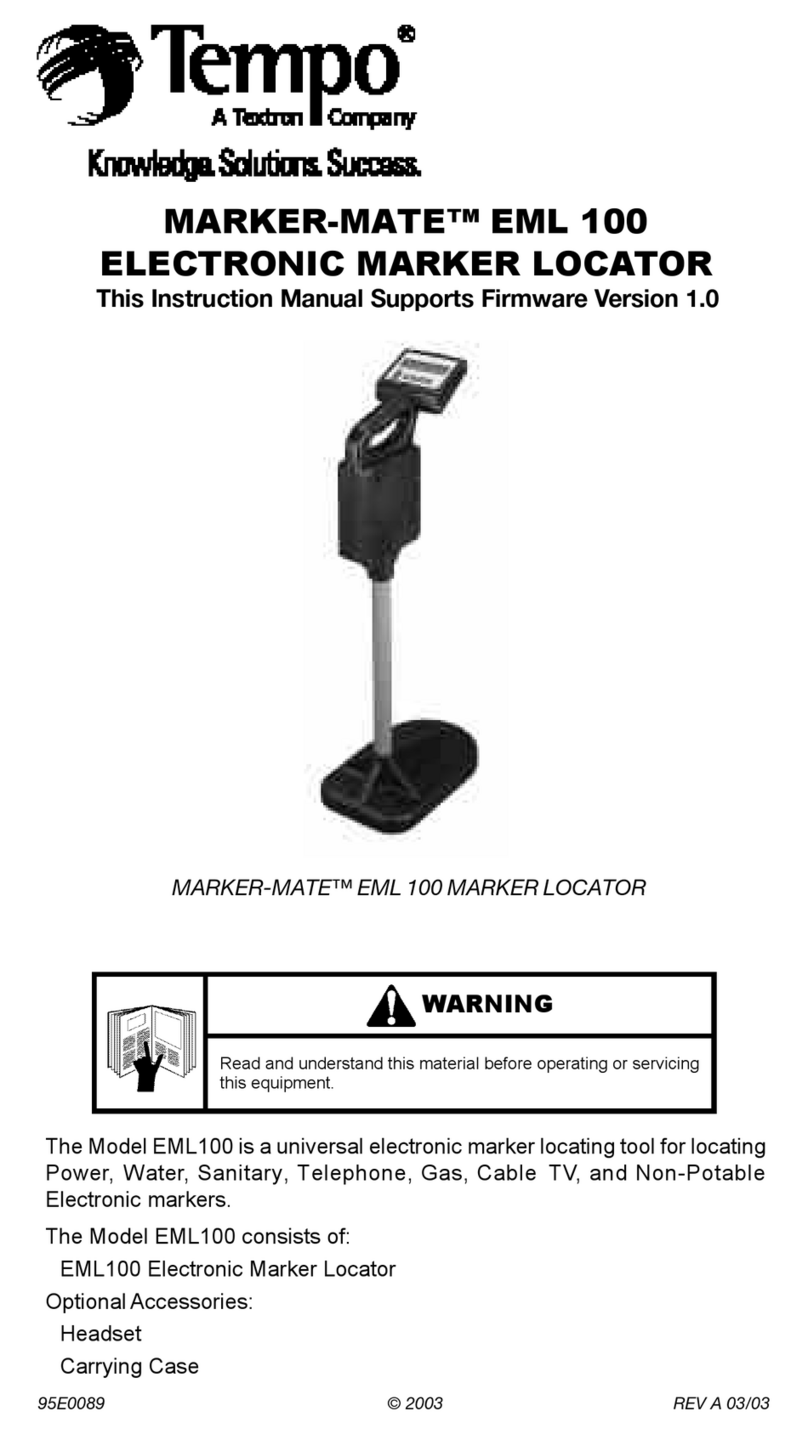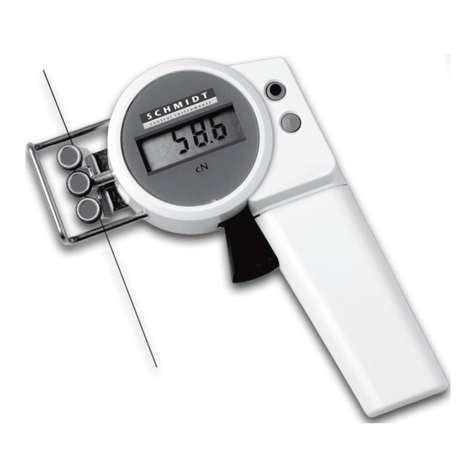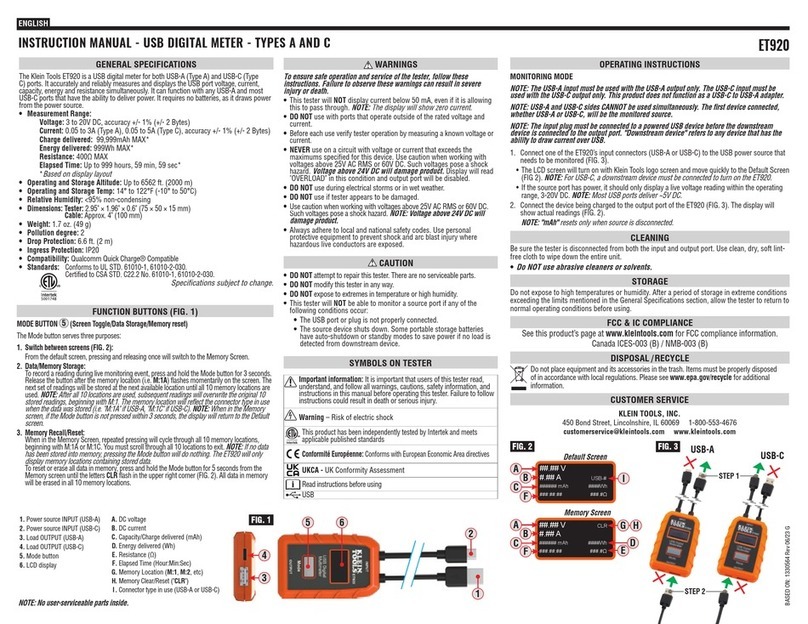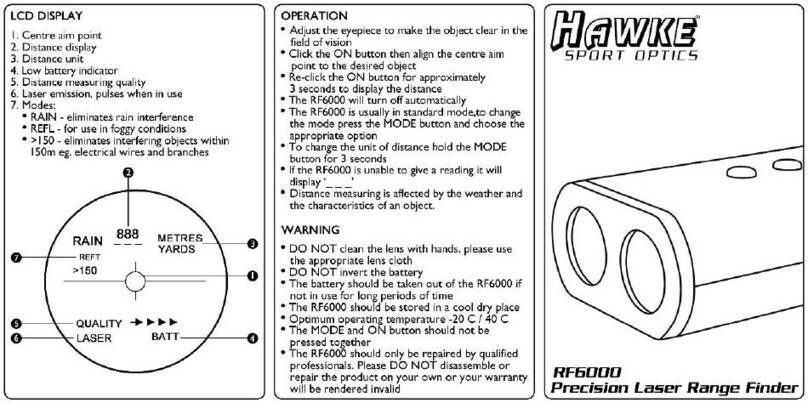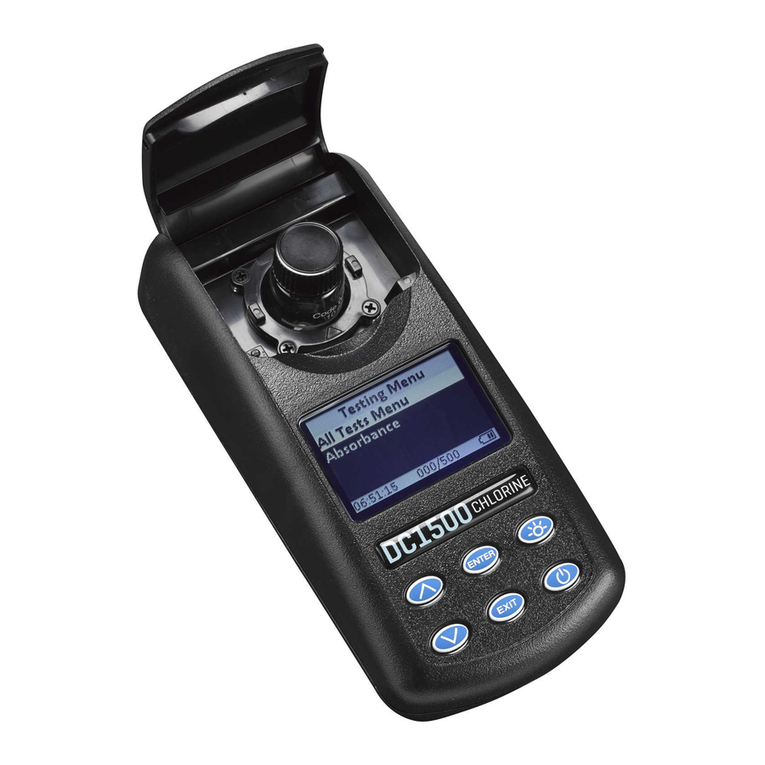Trinix TX7410 User manual

I
Operation Manual
LCR Meter
TX7410
DAE KWANG T&M CO.,LTD
http://www.kdk.co.kr
TEL :02)2617-0787

II
Content
CHAPTER 1 GENERAL INTRODUCTION ......................................................................................1
1.1 FOREWORD......................................................................................................................................1
1.2 OPERATING CONDITIONS.................................................................................................................2
1.2.1 Power requirements .....................................................................................................2
1.2.2 Opearing temperature and humidity ..........................................................................2
1.2.3 Warm-up time................................................................................................................3
1.2.4 Notices............................................................................................................................3
1.3 DIMENSIONS &WEIGHT..................................................................................................................3
1.4 SAFETY SUMMARY..........................................................................................................................3
1.5 ELECTROMAGNETIC COMPATIBILITY...............................................................................................4
1.6 SYMBOLS AND ABBREVIATIONS ......................................................................................................4
CHAPTER 2 BASIC SPECIFICATIONS............................................................................................7
2.1 MEASUREMENT FUNCTIONS............................................................................................................7
2.1.1 Measurement parameters ...........................................................................................7
2.1.2 Combinations of measurement parameters..............................................................7
2.1.3 Equivalent mode...........................................................................................................7
2.1.4 Range.............................................................................................................................8
2.1.5 Trigger mode..................................................................................................................8
2.1.6 Measuremetn delay......................................................................................................8
2.1.7 Measurement terminal mode ......................................................................................9
2.1.8 Measurement speed.....................................................................................................9
2.1.9 Filtering depth................................................................................................................9
2.1.10 Basic accuracy..............................................................................................................9
2.2 TEST SIGNAL ...................................................................................................................................9
2.2.1 Test singal frequency ...................................................................................................9
2.2.2 Test signal level.............................................................................................................9
2.2.3 Output impedance ......................................................................................................10
2.2.4 Measurement display range......................................................................................10
2.3 FUNCTION .....................................................................................................................................10
2.3.1 Correction.....................................................................................................................10
2.3.2 Comparator..................................................................................................................10
2.3.3 Parameter display....................................................................................................... 11
2.3.4 Automatic LCZ............................................................................................................. 11
2.3.5 Discharging test .......................................................................................................... 11
2.3.6 Memory ........................................................................................................................12
2.3.7 Interface .......................................................................................................................12
CHAPTER 3 PANEL INTRODUCTIONS.........................................................................................13
3.1ATOUR OF FRONT PANEL ..............................................................................................................13
3.2ATOUR OF REAR PANEL................................................................................................................15
3.3 DISPLAY DESCRIPTION ..................................................................................................................16

III
CHAPTER 4 OPERATION INSTRUCTIONS..................................................................................18
4.1 TURNING ON THE INSTRUMENT .....................................................................................................18
4.2 FUNCTION OPERATIONS.................................................................................................................18
4.2.1 Primray parameter setup...........................................................................................18
4.2.2 Secondary parameter setup......................................................................................18
4.2.3 Frequency setup.........................................................................................................19
4.2.4 Signal voltage..............................................................................................................19
4.2.5 Measurement speed...................................................................................................19
4.2.6 Trigger...........................................................................................................................19
4.2.7 Range setup ................................................................................................................19
4.2.8 Open correction...........................................................................................................20
4.2.9 Short correction...........................................................................................................21
4.2.10 Display mode...............................................................................................................21
4.2.11 Comparator..................................................................................................................22
4.2.12 Measurement setup....................................................................................................22
4.2.13 Limit list setup..............................................................................................................26
4.2.15 File operation function................................................................................................30
4.2.16 System function setup................................................................................................31
CHAPTER 5 REMOTE CONTROL..................................................................................................37
5.1 RS232C INTERFACE INTRODUCTION .............................................................................................37
5.1.1 RS232C connection....................................................................................................37
5.1.2 Communication with a computer..............................................................................38
5.2 GPIB INTERFACE INTRODUCTION...........................................................................................43
5.2.1 GPIB connection.........................................................................................................43
5.2.2 GPIB interface functions............................................................................................45
5.2.3 GPIB addressing.........................................................................................................45
5.2.4 GPIB bus function.......................................................................................................45
5.2.5 Data format..................................................................................................................46
CHAPTER 6 HANDLER INTERFACE.............................................................................................47
6.1 GENERAL INFORMATION................................................................................................................47
6.2 SIGNAL’S DEFINITION....................................................................................................................47
6.3 ELECTRICALCHARACTERISTICS....................................................................................................50
6.3.1 DC Isolated Outputs...................................................................................................50
6.3.2 DC Isolated Input........................................................................................................53
CHAPTER 7 PACKING & WARRANTY..........................................................................................54
7.1 PACKING........................................................................................................................................54
7.2 WARRANTY ...................................................................................................................................54

TX7410 Operation Manual
1
Chapter 1 General Introduction
Thank you for purchasing our product. The contents of the shipment should be as listed in
the packing list. If the contents are incomplete, if there is mechanical damage or defect, or
if the instrument does not pass the power-on self tests, please notify our company.
1.1 Foreword
TX7410 is a precision LCR meter with high accuracy, good stability, and wide measurement
range. Controlled by a 16 bits MPU, TX7410 can be used for evaluating LCR components,
materials and semiconductor devices over a wide range of frequencies (50 Hz to 100 kHz)
and test signal levels (0.1V, 0.3V, 1V). With its powerful function, excellent performance,
perspicuous LCD display and easy menu operation, TX7410 is suitable for high speed
measurement need on product line and high accuracy and stability measurement need in
laboratory. By using the Handler interface, IEEE488 interface (optional), and RS232C
interface, TX7410 can easily be used for automatic test system and computer remote
control.
The instrument provides variable test conditions, typical conditions are as follows:
Test signal frequency
10 typical frequency points available from 50 Hz to 100 kHz: 50Hz, 60Hz, 100Hz,
120Hz, 1kHz, 10kHz, 20kHz, 40kHz, 50kHz, 100kHz.
Test signal level
Programmable signal level from 0.01 V to 2.00 V in 0.01 V resolution.
Measurement speed
Fast, Medium and Slow measurement speed can be selected. Using the averaging rate
(from 1 to 255 programmable) function, you can get more stable measurement
results.
Constant selectable source resistance
30 Ω or 100Ω
Correction function
The OPEN, SHORT correction for correcting the stray admittance, the residual
impedance, and the other errors can be performed. The correction function has two
kinds of correction methods. In one method the open and short correction can be
performed at all of the frequency points, and in the other method the open, short
correction can be performed at the frequency points you specify.

TX7410 Operation Manual
2
TX7410 provides 3 display modes and 2 kinds of sorting modes:
Direct:
The actual measurement results are displayed.
Absolute deviation (ΔABS):
The difference between the measured value of the
DUT and a previously stored reference value are displayed.
Percentage deviation (Δ%):
The difference between the measured value of the
DUT and a previously stored reference value are displayed as a percentage of the
reference value.
Component sorting:
Two comparison modes, absolute deviation and percent
deviation can be used.
4-bin sorting:
3 PASS bins, 1 FAIL bin, and 1 AUXiliary BIN.
TX7410 provides several communication interfaces which make it easy to output the
measurement results to other equipments (for example computers), or build an automatic
test system.
RS232C interface:
RS232C interface makes it easy to communicate with other
quipments. You can set the measurement functions and input the parameters through
RS232C interface instead of keyboard on front panel.
IEEE488 interface (optional):
IEEE488 interface helps instrument to build an
automatic test system with computer and other measurement instruments.
Command of RS232C and IEEE488 interfaces are programmed in the format of
common SCPI.
HANDLER interface:
By using the handler interface, the instrument can easily be
combined with a component handler, and a system controller to fully automate
component testing, sorting, and quality control data processing.
TX7410 has the file function to store the set parameters, limit parameters and list sweep
parameters as a file in the internal nonvolatile memory, so that the setups can be easily
reloaded, and the defult file will be automatically reloaded when TX7410 is turned on.
1.2 Operating Conditions
1.2.1 Power requirements
Vltage: 220V (1±10%)
Frequency: 50Hz/60Hz (1±5%)
Power: <50VA
1.2.2 Opearing temperature and humidity
Temperature: 0°C~40°C
Humidity: <90%RH

TX7410 Operation Manual
3
1.2.3 Warm-up time
More than 20 minutes after the instrument is turned on.
1.2.4 Notices
Please do not operate the instrument in the place that is vibrative, dusty, under direct
sunlight, or where there is corrosive air.
Although the instrument has been specially designed for reducing the noise cased by
ac power, a place with low noise is still recommended. If this cannot be arranged,
please make sure to use power filter for the instrument.
Please store the instrument in the place where temperature is between 5℃ and 40℃,
humidity is less then 85% RH. If the instrument will not be put in use for a time,
please have it properly packed with its original box or a similar box for storing.
Don’t frequently turn on and off the instrument, doing so will lead to the loss of the
calibrated data and the data saved by users.
1.3 Dimensions & Weight
Dimensions: 270×120×380 (mm3)
Weight: approx. 3kg
1.4 Safety Summary
The following general safety precautions must be observed during all phases of operation,
service, and repair of this instrument.
Ground the instrument
To avoid electric shock hazard, the instrument chassis and cabinet must be connected to a
safety earth ground by the supplied power cable with earth blade.
DO NOT operate in an explosive atmosphere
Do not operate the instrument in the presence of flammable gasses or fumes. Operation of
any electrical instrument in such an environment constitutes a definite safety hazard.
Keep the instrument away from live circuits
Operator can not remove instrument’s cover. Component replacement and internal
adjustments must be made by qualified maintenance personnel. Do not replace
components with the power cable connected. Under certain conditions, dangerous
voltages may exist even with the power cable removed. To avoid injuries, always
disconnect power and discharge circuits before touching them.

TX7410 Operation Manual
4
DO NOT attempt service or adjustment alone
Do not attempt internal service or adjustment unless another person, capable of rendering
first aid and resuscitation, is present.
DO NOT substitute parts or modify instrument
Because of the danger of introducing additional hazards, do not install substitute parts or
perform unauthorized modifications to the instrument. Return the instrument to our Sales
and Service Office for service and repair to ensure that safety features are maintained.
1.5 Electromagnetic Compatibility
This product has been designed and tested to the requirements of the Electromagnetic
Compatibility (EMC) Directive. To use a properly shielded cable or shielded coaxial cable to
connect each of the ports to their respective controllers, peripherals, equipments or
devices may ensure to meet the requirements.
1.6 Symbols and Abbreviations
ABS absolute
ADDR address
ALCZ auto LCZ
ASCII American Standard Code for Information Interchange
AUX auxailiary
BIASM bias mode
BINn bin number
COMP compare
Cs equivalent serial capacitance
Cp equivalent parallel capacitance
D dissipation factor
DCL device clear
DCHR discharge
DCR DC resistance
DELIM delimiter
DIR direct
DUT the device under test
EXT external
EOM end of measurement
EOI end or identify
ESR equivalent serial resistance

TX7410 Operation Manual
5
FREQ frequency
GTL go to local
GET group execution trigger
GPIB general-purpose interface Bus
HDL Handler interface
IDX index
IFC interface clear
INT internal
KBEEP kep beep
KLOCK key lock
L2A primary inductance by 2-wire measurement
L2B secondary inductance by 2-wire measurement
LCD liquid crystal display
LCR inductance, capacitance, resistance
LCZ inductance, capacitance, impedance
Lk leakage inductance
Lp equivalent parallel inductance
Ls equivalent serial inductance
M mutual inductance
MAN manual
N turns ratio
NOM nominal value
PARA A parameter A
PARA B parameter B
PER percentage
PHI primary high
PLO primary low
Q quality factor
R resistance, real part of impedance
R2 DC resistance by 2-wire measurement
RMT remote control
Rs equivalent serial resistance
RS recommandation standard
Rp equivalent parallel resistance
SCPI standard command of programmable instruments
SDC selected device clear
SEC secondary parameter
SMD surface mount devices

TX7410 Operation Manual
6
SREJ secondary reject
SRES source resistor
TRGEG trigger edge
TRIG trigger
X reactance, imaginary part of impedance
Z impedance
θphase angle
4TP 4-terminal pair

TX7410 Operation Manual
7
Chapter 2 Basic Specifications
2.1 Measurement Functions
2.1.1 Measurement parameters
L: inductance C: capacitance R: resistance
Z: impedance X: reactance
D: dissipation θ: phase angle Q: quality factor
2.1.2 Combinations of measurement parameters
Primary paratmeter Secondary parameters
L θ° (angle), θr (radian), R, X, Q, D
C θ° (angle), θr (radian), R, X, Q, D
R θ° (angle), θr (radian), R, X, Q, D
Z θ° (angle), θr (radian), R, X, Q, D
Note: Suffix “s” means series; suffix “p” means parallel.
2.1.3 Equivalent mode
Series and parallel
Circuit mode Dissipation Conversion
L
D=2πFLp/Rp=1/Q Ls=Lp/(1+D2)
Rs=RpD2/(1+D2)
D=Rs/2πFLs=1/Q Lp=(1+D2)Ls
Rp=(1+D2)Rs/D2
C
D=1/2πFCpRp=1/Q Cs=(1+D2)Cp
Rs=RpD2/(1+D2)
D=2πFCsRs=1/Q Cp=Cs/(1+D2)
Rp=Rs(1+D2)/D2
Q=Xs/Rs, D=Rs/Xs, Xs=1/2πFCs=2πFLs
Note: Suffix “s” means series; suffix “p” means parallel.

TX7410 Operation Manual
8
The real-world capacitor, resistor and inductor are not ideal, but component of complex
impedance in the form of serial connection or parallel connection. The instrument
calculates necessary values according to equivalent circuit connected in series or parallel.
And different result will be obtained in different circuits, differing in different components.
Two equivalent modes can be conversed through some formulas, and Q and D don’t
change in different modes, as shown in the above figure.
Generally speaking, component with low impedance (such as large capacitor and small
inductor) is usually measured in series mode, and component with high impedance (such
as small capacitor and large inductor) is usually measured in parallel mode. And the
equivalent mode can be decided according to the application of component. If a capacitor
is used for power filtering, series mode is the best choice, and if it’s used for LC oscillat
circuit, parallel mode should be selected.
2.1.4 Range
Auto, Manual
9 ranges for LCR measurement
2.1.5 Trigger mode
Internal, External, Manual, Bus
Internal:
When the trigger mode is set to INTernal trigger mode, the instrument
continuously repeats measurements.
External:
When the trigger mode is set to EXTernal, the instrument performs a single
measurement every time a low-to-high transition TTL level signal is applied to
the Handler interface on the rear panel.
BUS:
When the trigger mode is set to BUS trigger mode, the instrument performs a
single measurement every time the *TRG common command is sent to TX7410
via GPIB. The BUS trigger mode cannot be set on the front panel. Send the
TRIGger:SOURce BUS command via GPIB or RS232C to set the trigger mode to
the BUS trigger mode.
Manual:
When the trigger mode is set to MANual trigger mode, the instrument performs
a single measurement every time when TRIGGER key on the front panel is
pressed.
2.1.6 Measuremetn delay
Waiting time after measurement completes. If HANDLER interface clear has been set,
signal on HANDLER interface will be cancelled after delay.

TX7410 Operation Manual
9
2.1.7 Measurement terminal mode
Common measurement: 4-terminal pair
Hcur: high current (abbreaviation: Hc) Lcur: low current (abbreaviation: Lc)
Hpot: high potential (abbreaviation: Hp) Lpot: low potential (abbreaviation: Lp)
Transformer measurement: 2-terminal
Hpot---Lpot: transformer’s primary (winding A)
Hcur---Lcur: transformer’s secondary (winding B)
Note: Make sure shielding terminals of Hcur and Lcur are reliably short with low impedance
when the test fixtures or cables used don’t come standard with the instrument.
2.1.8 Measurement speed
Measurement speed can be affected by test frequency, integral time, value of component,
display mode, range mode, average times and comparator. And the following parameters
are evaluated at the status of frequency of 10kHz, range hold, comparator off, no
communication interface, which is possibly maximum values:
FAST: about 20meas/sec
MED: about 10meas/sec
SLOW: about 2meas/sec
At the frequency of being lower than 1kHz, measurement speed will slow down. And
transformer parameter measurement at the same conditions, especially resistance
measurement, will have lower speed.
2.1.9 Filtering depth
1~99, programmable
2.1.10 Basic accuracy
0.1%
2.2 Test Signal
2.2.1 Test singal frequency
10 typical frequencies: 50Hz, 60Hz, 100Hz, 120Hz, 1kHz, 10kHz, 20kHz, 40kHz, 50kHz,
100kHz.
Frequency accuracy: 0.02%
2.2.2 Test signal level
3 test levels: 0.1V, 0.3V, 1V

TX7410 Operation Manual
10
Accuracy: ±(10%×set value+2mV)
2.2.3 Output impedance
30Ω±5%, 100±5% (fixed at 100Ωsource impedance at bias mode)
2.2.4 Measurement display range
Parameter Display range
L 0.001μH~99.999kH
C 0.001pF~9999.9μF
R, X, Z 0.0001Ω~99.999MΩ
D 0.0001~9.9999
Q 0.0001~9999.9
θAngle: -179.99°~179.99°
Radian: -3.1415~3.1415
% -99.999%~999.99%
If non-percentage data is out of display range, it will be displayed as 99999.
2.3 Function
2.3.1 Correction
Open correction:
to eliminate measurement errors due to parasitic stray admittance (C,
G) of the test fixture.
Short correction:
to eliminate measurement errors due to parasitic residual impedances
(L, R) of the test fixture.
Cable length calibration:
0m: to measure with terminal fixture;
1m: to measure with 1m cable of TX7000,7001
CUST: to calibrate with cable of required length. And the shipped instrument hasn’t been
performed calibration.
Correction function can be turned off.
2.3.2 Comparator
The instrument can perform multi-bin sorting and support signal output of HANDLER
interface.
BIN1 to BIN3:
Both primary and secondary measurement parameters are within limits.
OUT BIN:
Primary parameter is not within limits. Or primary parameter is within limits,
secondary parameter is not within limits, and AUX bin is off.

TX7410 Operation Manual
11
AUX BIN:
Primary parameter is within limits, but whose secondary parameter
measurement result is not within limits.
Sorting mode:
ABS (absolute deviation):
absolute deviation between measured result and nominal
value is compared with bin limit.
PER (percentage deviation):
percentage deviation between measured result and
nominal value is compared with bin limit.
2.3.3 Parameter display
Direct:
The actual measured values will be displayed.
⊿:
Absolute devation between measured result and nominal value is displayed.
⊿%:
Percentage deviation between measured result and nominal value is displayed.
2.3.4 Automatic LCZ
The instrument automatically selects L, C, Z and equivalent mode according to impedance
characteristics of the device under test, to automatically recogonize unkown and mixing
components.
At AUTO mode, primary and secondary parameters are selected according to impedance
angle: Impedance angle Primary and secondary parameters
θ>5oL-Q
θ<-5oC-D
others Z-θ
Equivalent mode is selected according to impedance:
Impedance Equivalent mode
Z>1kΩ parallel
Z<1kΩ series
Keep the original parameter at similar status of short circuit or open circuit. If primary and
secondary parameters are modified, automatic LCZ function will be cancelled.
2.3.5 Discharging test
The instrument is operated with external bias, and generally external bias source has DC
isolated circuit. When discharging function is turned on, the instrument will perform
low-impedance discharge on sampling path to reduce the effect on test accuracy and
speed caused by charge on isolated capacitance. Low impedance lasts for 10 to 20ms.

TX7410 Operation Manual
12
2.3.6 Memory
The instrument’s measurement parameter, such as frequency and level, measurement
setups, comparator’s limit data can be stored in nonvolatile storage in the form of files.
When they’re needed, they can be loaded directly from file menu to save time. And the
latest saved and loaded file will be automatically loaded when the instrument is turned on
next time.
2.3.7 Interface
IEEE488 interface:
also called GPIB interface and equal to IEC625 interface, but
having different linker. Communication command is in the format of SCPI and all
commands and data on BUS are sent in ASCII code. The interface supports automatic
FETCH, and has the functions of SH1, AH1, T5, L4, RL1, DC1, DT1, C0, and E1. It has
the compatibility of IEEE488.1 and IEEE488.2.
RS232C interface:
It uses standard minimum subclass of RS232C and doesn’t
support hardware connection. The interface has transfer baud rate: 4800bps, 9600bps,
11520bps, 12800bps, 14400bps, 19200bps, 28800bps, and 38400bps, signal logic
level of ±8V and maximum transfer distance of 15m. The communication command
is in the format of SCPI, and all commands and data on BUS are sent in ASCII code.
The interface supports automatic FETCH, and ending symbol supports LF, CR, CR+LF.
HANDLER interface:
It receives trigger signal and output sorting comparison result
signal and outputs synchronous signal of measurement (IDX, EOM). Low level is valid
for logic level. It has internal pull-up resistance and external power is defautly used.
Trigger edge has two options of rising or falling. And measurement output signal is
optional to be cleared after measurement delay.

TX7410 Operation Manual
13
Chapter 3 Panel Introductions
3.1 A Tour of Front Panel
Figure 3-1 Front panel overview
Figure 3-2 Softkeys
1) Brand and Model
The registered brand of our company and model of the instrument are printed.
2) LCD
240×64 dot-matrix Liquid Crystal Display (LCD) displays measurement results, test
conditions, etc.
3) Sorting indicators
It indicates sorting result: NG—not good
P1—pass BIN1
P2—pass BIN2
P3—pass BIN3
AUX—auxiliray bin

TX7410 Operation Manual
14
4) Power on/off
Power on/off switch. In the “I” position all operating voltages are applied to the instrument.
In the “O” position NO operating voltages are applied to the instrument.
5) Softkeys
They have functions of three levels:
a) Functions by directly pressing softkeys
PARA A: to select primary parameters
PARA B: to select secondary parameters
FREQ: to set frequency
LEVEL: to select level
SPEED: to select measurement speed
RANGE: to set range HOLD/AUTO
SHIFT: to shift to second function
TRIGGER: to trigger single measurement
▲▼is used to select select PAR, PAR B, FREQ, LEVEL, SPEED or RANGE,the object
is determined by the formal press. If pressPARA A firstly, then ▲▼corresponds
with parameter selection;pressFREQ key,then ▲▼corresponds with frequency
selection.
LOCAL: to enter local operation at remote control mode (RMT status)
b) Functions by pressing SHIFT softkey
OPEN: to perform open correction
SHORT: to perform short correction
DISP: to select parameter display mode
COMP: to turn on or off comparator
BIAS Bias function turn on or off
SETUP: to enter measurement setup menu
LIMIT: to enter list sweep setup menu
FILE: to enter file management function menu
SYSTEM: to enter system setup menu
c) Only the following menu keys are valid after entering menu:
【ESC】
【ENTER】
【▲】: to select option or add 1
【▼】: to select option or minus 1
【
▲
】: to select option
【
▼
】: to select option
【m】、【 μ 】、【 n】 、【 M】 、【 p】 、【 k】in limit set menu,when modifying limit data, press
unit rate directly to replace ENT key.
Unit rate:【 p】means×10-12,【 n】means×10-9,【μ】means×10-6,【 m】means×
10-3,【 k】means×103,【 M】means×106.

TX7410 Operation Manual
15
6) UNKNOWN terminals
!
These are the UNKNOWN Terminals used to connect a four-terminal pair test fixture or test
leads for measuring the device under test.
HD(HCUR): High current drive
HS(HPOT): High potential sense
LS(LPOT):Low potential sense
LD(LCUR): Low current drive
Note: Make sure shielding terminals of Hcur and Lcur are reliably short with low impedance
when the test fixtures or cables used don’t come standard with the instrument.
7) Frame terminal
!
This is the FRAME Terminal which is tied to the instrument's chassis and which can be used
for measurements that require guarding.
3.2 A Tour of Rear Panel
GPI B RS-232C HANDLER
WARNI NG
!
NO USER SERVICEABLE PARTS CONTAI NED,
DO NOT REMOVE COVERS. HAZARDOUS VOL TAGES PRESENT.
REFER SERVICE TO QUALIFIED PERSONNEL.
DO NOT CONNECT ANY DC/ AC CURRENT/ VOLTAGE SOURCE
TO TEST OR MONITOR TERMI NAL.
~L I NE VOLTAGE FUSE
220V/50Hz 250V T1AL
Figure 3-3 Rear panel overview
1) IEEE488 (GPIB) interface connector (Optional)
This is the IEEE488 interface connector used when operating on the General Purpose
Interface Bus.
2) RS232C interface connector
This is the RS232C interface connector used when operating on the serial interface.
3) HANDLER interface connector
This is the HANDLER interface connector used when operation with a component handler
to fully automate component testing, sorting, and quality control data processing.
4) Name plate
Name plate is used to provide the information of date, model, lot number and

TX7410 Operation Manual
16
manufacturer etc.
5) Grounding
If the power cord doesn’t ground or isn’t reliably grounding, please connect grounding line!
6)LINE input receptacle
AC power cord receptacle.
7) Fuse holder
Fuse holder for TX7410 line fuse, 220Vac, 1A.
3.3 Display Description
Figure 3-4 Display area
1) Alarm display
“”on: to turn on alarm
“” off: to turn off alarm
2) Primary parameter indicator
It indicates primary parameters of the currently measured component.
TX7410 has the following primary parameters: LS, LP, CS, CP, RS, RP, Z.
3) Measurement result display
It displayes measurement results of the device under test.
4) Unit display of primary and secondary parameters
It displays units of primary and secondary parameters.
Inductance unit: μH, mH, H
Capacitance unit: pF, nF, μF
Resistance/impedance unit: mΩ, Ω, kΩ, MΩ
Angle unit: o, r
5) Signal frequency indicator

TX7410 Operation Manual
17
TX7410 has 10 typical frequencies from 50Hz to 100kHz.
6) Singal level indicator
“0.1V”: current signal voltage is 0.1V.
“0.3V”: current signal voltage is 0.3V.
“1V”: current signal voltage is 1V.
7) Measurement speed indicator
“F”: fast
“M”: middle
“S”: slow
8) Range indicator
“AUTO”: range auto
“HOLD”: range hold
Digit 0-9 indicates current range number.
TX7410 has the function of measuring DC resistance. DC resistance doesn’t have common
range with AC parameters, so current display and operatable range can be switched.
9) Secondary parameter indicator
It indicates secondary parameters of the currently measured component.
TX7410 has the following secondary parameters: θ° (angle), θr (radian), R, X, Q, D.
10) Comparator indicator
“COMP” on: Comparator function is turned on.
“COMP” off: Comparator function is turned off.
11) Display mode of primary parameter
It indicates current display mode of primary parameter:
“DIR” on: direct mode.
“⊿” on: absolute deviation mode.
“%” on: percentage deviation mode.
12) RMT
RMT means the instrument is at the status of remote communication when only LOCAL key
can be operated on panel.
13) Second function indicator
SHIFT on: second function
SHIFT off: first function
14) Test status indicator
RUN on: The instrument is performing a measurement.
RUN off: The instrument isn’t performing measurement.
Table of contents
Other Trinix Measuring Instrument manuals
